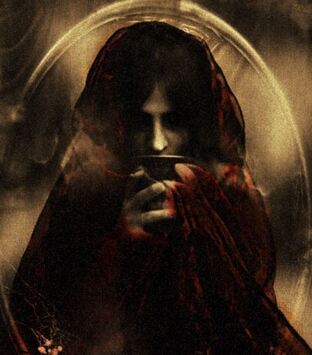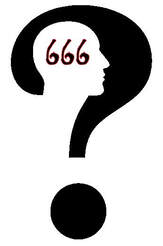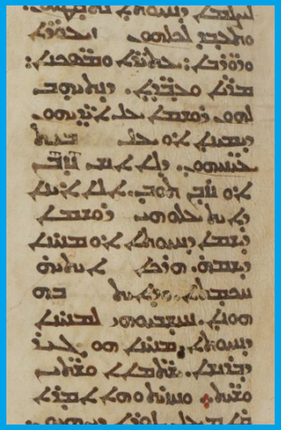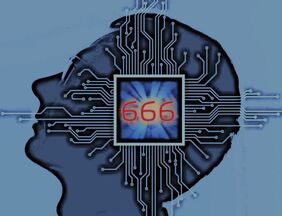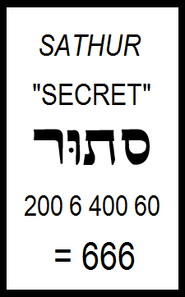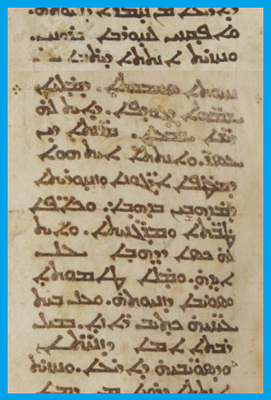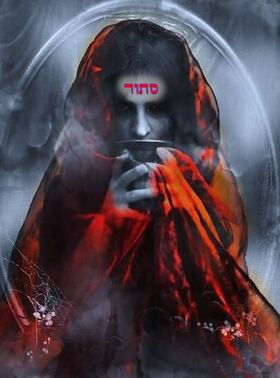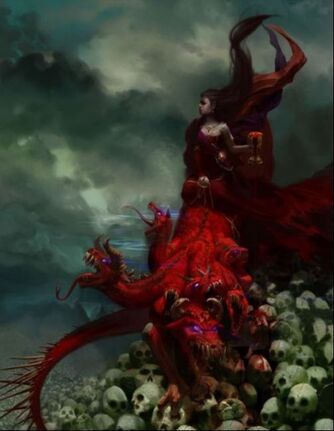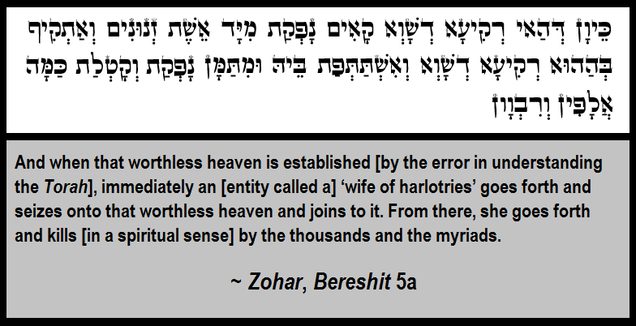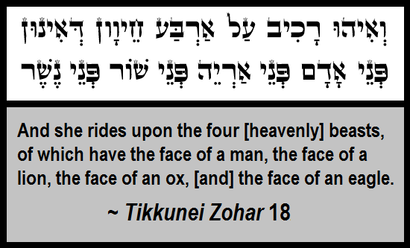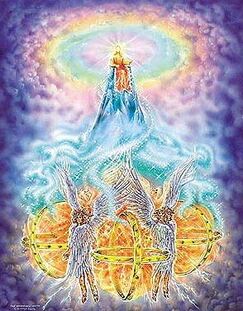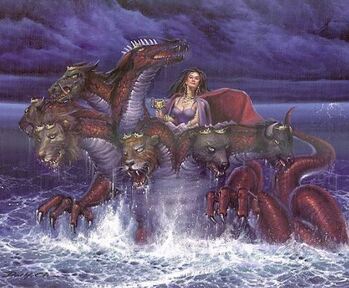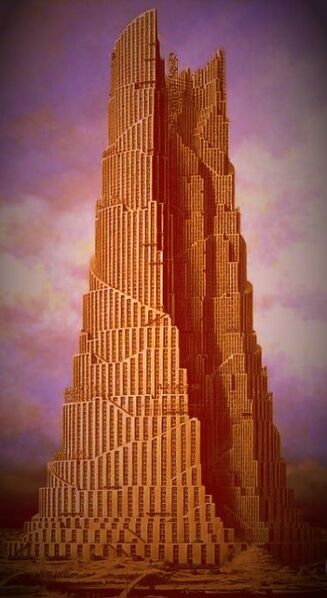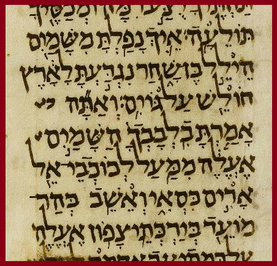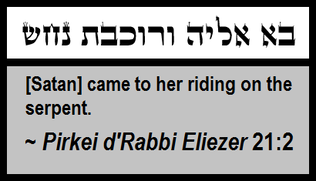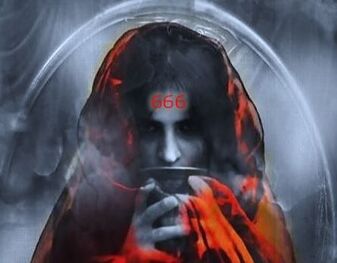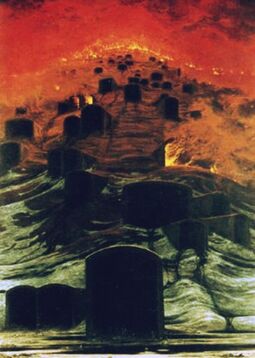ON THE FOREHEAD OF A HARLOT
by Jeremy Chance Springfield
5/23/2023
The book of Revelation dwells at the end of the New Testament, full of bizarre imagery and wild prophecies of the final days of a doomed earth before the Kingdom of Heaven is established in eternal glory. One of its truly captivating subjects is the infamous “mark of the beast.” The subject seems as enduringly mystifying today as it surely was when read by its first readers.
Attempts to identify precisely what was meant by the mark have fueled so much speculation. Exactly what the mark signifies has troubled even the most insightful of investigators into its enigmatic nature. While scores of sincere believers have looked for an answer concerning the mark’s identity and its meaning, we must be willing to admit that it has remained largely an elusive topic. The richness of the symbolism filling the book of Revelation means the topic is veiled in layers of possible explanations that are not so easily unraveled.
Attempts to identify precisely what was meant by the mark have fueled so much speculation. Exactly what the mark signifies has troubled even the most insightful of investigators into its enigmatic nature. While scores of sincere believers have looked for an answer concerning the mark’s identity and its meaning, we must be willing to admit that it has remained largely an elusive topic. The richness of the symbolism filling the book of Revelation means the topic is veiled in layers of possible explanations that are not so easily unraveled.
The purpose of this study is not to arrive at a conclusive identification of a particular personal name linked to the mark for the intent of revealing a specific human as the source behind the mark. Neither is this study trying to provide a guess at how this mark might be fulfilled in a literal sense. Instead, an attempt will be made to give a perspective that has been often ignored in the topic.
The mark is encountered in Revelation 13:16-18.
|
16 And he makes all of them, small and great, wealthy and poor, masters and servants, to be given to them an imprint upon their right hands, or upon "between their eyes,"
17 that no man should buy or sell furthermore, unless he who has upon him the imprint of the name of the beast, or the number of his name. 18 Here is one having wisdom and having in him understanding: he shall count the number of the beast, for it is the number of a son of man—six hundred and sixty-six. |
Consider well the wording of where the mark is placed: “upon 'between their eyes.'” The phrase “between the eyes” is a Hebraic idiom encountered in the Hebrew Scriptures that actually means the top of the forehead itself, where the hairline begins.
To perform this calculation for the mark, one must use the method known as gematria. Gematria is the act of assigning a numeric value to the letters in an alphabet. Assyrian, Babylonian, and ancient Jewish writers used this to encode information in writings.
Using this odd aspect of the Hebrew language, the text tells us the name is encoded in a way that can only be discerned if we accept the validity and usage of gematria. With the advent of modern technology has come attempts at discerning a personal name behind the mark, but again, discovering who that might be--if it is even the name of a recognizable individual--is not the purpose of this study, and I would even suggest it is not the purpose behind what John the revelator meant by giving the type of information he recorded.
The reason I propose such a thing has to do with the type of book Revelation consists of, and how information is presented in that book. It is a book of Jewish mysticism, that is to say, it deals largely with matters of a spiritual nature, and is not merely an instructional manual on life, like the Torah, or the wisdom literature of Hebrew Scriptures. It instead falls into the category of prophetic books like Ezekiel and Daniel, which are written in a unique style meant to simultaneously reveal and conceal the truth: revealed to the believer operating with educated discernment, and concealed to everyone else.
For this reason, the text is composed with symbolic language that is itself written in riddle-like fashion, to a degree, so that the reader can read one thing while potentially missing the deeper layer of meaning that is really being intended for those who have been discipled to appreciate the grand, overarching concepts that are embedded in the spiritual work. Sometimes this means the meaning of a thing is obscured but revealed with minimal difficulty, and at other times, Jewish texts will be in serious need of an insightful interpretation to elicit the intended meaning.
For this reason, Revelation's content is a complex structural achievement, weaving what was, what is (or what was present at the time of its composition), and what shall be. In short, it requires spiritual eyes to get a true revelation of the book of Revelation.
The reason I propose such a thing has to do with the type of book Revelation consists of, and how information is presented in that book. It is a book of Jewish mysticism, that is to say, it deals largely with matters of a spiritual nature, and is not merely an instructional manual on life, like the Torah, or the wisdom literature of Hebrew Scriptures. It instead falls into the category of prophetic books like Ezekiel and Daniel, which are written in a unique style meant to simultaneously reveal and conceal the truth: revealed to the believer operating with educated discernment, and concealed to everyone else.
For this reason, the text is composed with symbolic language that is itself written in riddle-like fashion, to a degree, so that the reader can read one thing while potentially missing the deeper layer of meaning that is really being intended for those who have been discipled to appreciate the grand, overarching concepts that are embedded in the spiritual work. Sometimes this means the meaning of a thing is obscured but revealed with minimal difficulty, and at other times, Jewish texts will be in serious need of an insightful interpretation to elicit the intended meaning.
For this reason, Revelation's content is a complex structural achievement, weaving what was, what is (or what was present at the time of its composition), and what shall be. In short, it requires spiritual eyes to get a true revelation of the book of Revelation.
That said, there is a term in the Hebrew language itself worth considering whose sum is 666.
It is the word SATHUR, meaning “hidden / secret / mystery.”
It is the word SATHUR, meaning “hidden / secret / mystery.”
This term of SATHUR is of particular interest to this topic in that it serves as an incredibly likely obvious answer to the riddle of 666. Furthermore, it accomplishes this feat without actually having to leave the book of Revelation at all. That's right! The likeliest solution to history's most mystifying number is staring us in the face in the book itself!
Consider the following to explain how this works.
In Revelation 17:3-5 we read the intriguing passage:
Consider the following to explain how this works.
In Revelation 17:3-5 we read the intriguing passage:
|
3 And he led me to the wasteland in the Spirit, and I saw a woman who was seated upon a red beast that was full of names of reviling, that had for it seven heads, yet ten horns.
4 And the woman was wearing purple and crimson that were interwoven with gold, and precious stones, and pearls. And a cup of gold she had upon her hand, and it was full [of] uncleanness, and the defilements of her harlotries. 5 And upon 'between her eyes' was written the secret: Bawel the Great, the mother of harlots and of defilements of the earth. |
In this disturbing vision the revelator describes in detail the great harlot riding the beast. This is symbolic language in use, for the woman is not a literal female, but a sinister spiritual seductress who lays waste the souls of mankind. She is described arrayed in finery and wealth as a sign of her welcomed involvement with multitudes throughout the ages, and in her hand is a goblet spilling over with the perversity of her forbidden engagements. These words are symbols for the enticements used by the spiritual kingdom of darkness to entangle human hearts ever tighter to the shackles of idolatrous worship.
As if these details were not enough to disclose the licentious nature she so wantonly promotes, we read that upon her forehead is written something that is revealing:
…the "secret:" Babylon the Great…
She is linked somehow to Babylon, that great adversary of the Holy One since the early days of mankind. The text, however, holds the key to understanding further what is being conveyed by this ancient link. It tells us of the "secret" that the harlot holds.
As if these details were not enough to disclose the licentious nature she so wantonly promotes, we read that upon her forehead is written something that is revealing:
…the "secret:" Babylon the Great…
She is linked somehow to Babylon, that great adversary of the Holy One since the early days of mankind. The text, however, holds the key to understanding further what is being conveyed by this ancient link. It tells us of the "secret" that the harlot holds.
In the Hebrew, the word “Secret” can validly be rendered as SATHUR in the sense of a name / title. We thus have a woman riding the beast who has upon her forehead the name SATHUR, possessing the value of 666. This would be an in-book answer to Revelation’s riddle of the mark of the beast being a name that is found upon a forehead! Whether written originally in Greek, Aramaic, or Hebrew, the book of Revelation holds enough information to allow us to arrive at an incredibly simple and straightforward answer to the mystique that is the mark of the beast!
Understanding that gematria is a Hebrew concept used in Scripture itself, then looking for an answer in the Hebrew tongue makes the most sense. Thankfully, the text seems to strongly suggest that the answer is literally staring us in the face with the mention of a "secret" that is right on the harlot's forehead: 666!
Understanding that gematria is a Hebrew concept used in Scripture itself, then looking for an answer in the Hebrew tongue makes the most sense. Thankfully, the text seems to strongly suggest that the answer is literally staring us in the face with the mention of a "secret" that is right on the harlot's forehead: 666!
In this detail and alignment, we find the “title” / name of the beast within the text of Revelation itself. If this is the intended answer, then we are not looking so much for a person or a particular world power to fulfill it, but rather the embodiment would be idolatry as a whole—false religion parading as a legitimate path to a life of spiritual worth and value.
This approach fits well the imagery spoken of in the ancient Jewish text of the Zohar, where it is speaking about what happens spiritually when someone wrongly applies the text of Scripture, thus basically erecting a deceptive stronghold for others to be ensnared and destroyed.
This approach fits well the imagery spoken of in the ancient Jewish text of the Zohar, where it is speaking about what happens spiritually when someone wrongly applies the text of Scripture, thus basically erecting a deceptive stronghold for others to be ensnared and destroyed.
What the revelator saw fits well with an understanding in Judaism that erroneously applying the Word has a detrimental spiritual effect, even to the point of being hijacked by negative spiritual forces to further lead humanity astray from true worship.
The Creator lamented Israel's fall into sin with similar terminology in Jeremiah 3:3.
The Creator lamented Israel's fall into sin with similar terminology in Jeremiah 3:3.
Having the "forehead of a wife of harlotries" is to say that there is no shame over the sins one has committed. What should be an embarrassment and reason to conceal ourselves is instead paraded in a sense of "tolerate me!" and "accept my choices" despite how destructive they are to our souls.
To view the harlot riding the beast as a spiritual concept of unfaithfulness in worship and not necessarily a literal place set up on the earth that controls man, allows us to appreciate her as the antithesis of the imagery disclosed in the related text of the Tikkunei Zohar, where the context is about the feminine attribute of the Presence of the Holy One, referred to in Jewish texts as the Shechinah. It says there about the holy Presence of the Most High:
To view the harlot riding the beast as a spiritual concept of unfaithfulness in worship and not necessarily a literal place set up on the earth that controls man, allows us to appreciate her as the antithesis of the imagery disclosed in the related text of the Tikkunei Zohar, where the context is about the feminine attribute of the Presence of the Holy One, referred to in Jewish texts as the Shechinah. It says there about the holy Presence of the Most High:
It is important to understand that the Shechinah is not a separate entity or spirit from the Holy One, but merely a term for the way we interact with the Creator in a particular manner in this world. When we understand this, we can appreciate that the imagery discussed above is speaking of the Presence of the Holy One as seen by the prophet in Ezekiel chapter 1, where the heavenly throne is depicted as being born up by four spiritual beasts, later identified in the book as Cherubim.
The text of the Tikkunei Zohar is perceiving this intimate portrait of the Creator as the Shechinah riding those four beasts. This seems to certainly be the Hebraic concept of which the antithesis is being shown in Revelation 17. The Tikkunei Zohar spoke of the Shechinah riding four beasts, and Revelation speaks of the contrast—a harlot riding a beast made up of four melded into one.
The text of the Tikkunei Zohar is perceiving this intimate portrait of the Creator as the Shechinah riding those four beasts. This seems to certainly be the Hebraic concept of which the antithesis is being shown in Revelation 17. The Tikkunei Zohar spoke of the Shechinah riding four beasts, and Revelation speaks of the contrast—a harlot riding a beast made up of four melded into one.
The distinction is clear if we have eyes to see it: the Presence of the Creator riding upon His heavenly throne versus the presence of all idolatry lauded by the thrones of fallen beings ruling in the earth.
When we understand the spiritual link to Babylon, and Babylon in Hebrew is Babel, that reality also allows us to return to the genesis of Babylon in Scripture: the city and the tower of Babylon mentioned in Genesis 11. While typically emphasis is placed on the site for the presence of the tower mentioned, the site was also the location of the city of Babel. Genesis 11:4 tells us this fact explicitly.
It eventually became the headquarters of mankind upon the earth for a time. With one mind they operated in unity for the same unacceptable goal: to glorify their own name!
In this can be appreciated why the Holy One intervened in their plans, as stated in Genesis 11:6.
In this can be appreciated why the Holy One intervened in their plans, as stated in Genesis 11:6.
Understanding these facts about the Babel first mentioned in Genesis, we can see the parallels to the one in Revelation, who is there depicted as a harlot and is described as a city, no less! That city “rules” over mankind! The purpose of Babel was a perverse spiritual center for mankind to attain their own perceptions of what it meant to be divinity: the tower was to reach into the heavens not by the merit of a life lived within the boundaries of the Holy One, but by flouting spiritual boundaries and blazing a trail of trespass to the gates of heaven.
When we see the details of Revelation concerning the mark of the beast and the entity of the harlot are all mature manifestations of the fledgling goal of Babel so long ago, then we can appreciate that the concept of taking the mark of the beast is all about standing in opposition to the path of obedient worship the Holy One has given to man to come to Him. This is what the harlot exemplifies.
The "secret" upon her forehead shows it so well.
The "secret" upon her forehead shows it so well.
Isaiah 14:12-13 is a prophetic word against the "king" of Babylon that is worth noting in this topic of the mark and the harlot.
This is no human king, but rather, the "serpent" who claimed kingship from Adam and Eve in the Garden so long ago. These details reveal the truth: the Enemy seeks to enslave men forever with fealty to a spiritual path alien to the narrow one revealed in the boundaries of a Torah life. Such a life is exemplified in living for pleasure, for self-fulfillment, for ego and the realization of all desire. It is idolatry and focus on what ultimately makes the person feel good—even if it is spiritually attuned, it is a concentration not on the things of the Spirit as defined by the Creator, but on the things of the spirit as defined by the lusts of the flesh.
It is an idolatry focused on the dopamine high of a self-centered life.
This is deception.
It is an idolatry focused on the dopamine high of a self-centered life.
This is deception.
In this link to the serpent of Eden we come full circle, from the end of Revelation to the beginning of Genesis, and it is now that the final details are revealed of the primordial origins of the mark of the beast. All sin had its foundation in the temptation of the serpent, and yet Judaism has a tradition concerning this that sheds further light upon the topic with a truly revealing conclusion. The text of Pirḳei d’Rabbi Eliezer preserves the information.
In this brief statement is a piece of information that cannot be ignored. Satan was “riding” the serpent that deceived Eve! Again, such terminology should not be taken as literal. Rather, this should be viewed as the spiritual insight as to who was controlling the beast to perform this act of slander and injection of doubt into the heart of Adam’s bride. The portrait of the serpent being ridden by no less than Satan is a huge piece of evidence linking all the way back to the book of Revelation to the beast and the harlot riding it who carries upon her forehead a mark of ownership which, as we have seen in this study, would legitimately possess the sum of 666!
Those in the kingdom of darkness--whether they believe they are in control or realize their enslavement--still have no shame over their sins. They instead ride in pride the beast that will lead them to their destruction, marked as his own in blatant view of all creation.
Those in the kingdom of darkness--whether they believe they are in control or realize their enslavement--still have no shame over their sins. They instead ride in pride the beast that will lead them to their destruction, marked as his own in blatant view of all creation.
The mark of the beast is brazen fealty to man in his sin and his desire to rule a kingdom over which he has no business even being a citizen. Standing in the Presence of the Holy One and all that He has set before us as right and proper, man has sought instead to circumvent such righteousness and seek out perversity and vainglory in every way. This is following upon the path trod by Satan himself, and rather than the freedom of living in the light of the graces of the Creator, it offers only enslavement to a future with no hope.
Be sure--a harlot is never free.
She is a slave to her situation.
So too, shall any who follow her footsteps to destruction find the same fate awaiting them. Only in repentance and shame for our actions will we be free from the coils of the serpent who chains us to the fires of judgment.
Be sure--a harlot is never free.
She is a slave to her situation.
So too, shall any who follow her footsteps to destruction find the same fate awaiting them. Only in repentance and shame for our actions will we be free from the coils of the serpent who chains us to the fires of judgment.
To possess the mark is to follow in the harlot's footsteps; to stand against man’s original purpose to exemplify in our word and actions the image of the Divine, to stand with spine erect and reject repentance and the hope it brings.
It is rebellion in theory and suicide in act.
The words of King Solomon in Proverbs 14:12 are a fitting close to the topic with a dose of sober wisdom.
It is rebellion in theory and suicide in act.
The words of King Solomon in Proverbs 14:12 are a fitting close to the topic with a dose of sober wisdom.
We truly have only one hope: the mercies of the Most High. Let us embrace the repentance necessary to worship Him in truth, and know that if man will seek Him, even the worst of our mistakes can be made whole. Psalm 83:17 (verse 16 in most English versions) speaks of what happens if sinners will be ashamed of their sins and come to the Holy One for forgiveness.
Although the spiritual harlot depicted in Revelation has a forehead uncovered and unashamed to show her brazen disobedience to the Most High, leading the forefront of idolatry in the earth, her followers can learn from her perverse fealty to the serpent's venomous lies, and seek instead what the Creator has for us. May we turn to the better Name in which is offered the hope of redemption even to those who have fallen the farthest from His graces.
On the forehead of the harlot we see what is no secret anymore: a reckoning will occur for those who willfully choose to engage in the idolatrous acts that come with following the serpent's lead. May we learn that what is on the forehead of the harlot need never be found as a mark upon man.
On the forehead of the harlot we see what is no secret anymore: a reckoning will occur for those who willfully choose to engage in the idolatrous acts that come with following the serpent's lead. May we learn that what is on the forehead of the harlot need never be found as a mark upon man.
All study contents Copyright Jeremy Chance Springfield, except for graphics and images, which are Copyright their respective creators.
